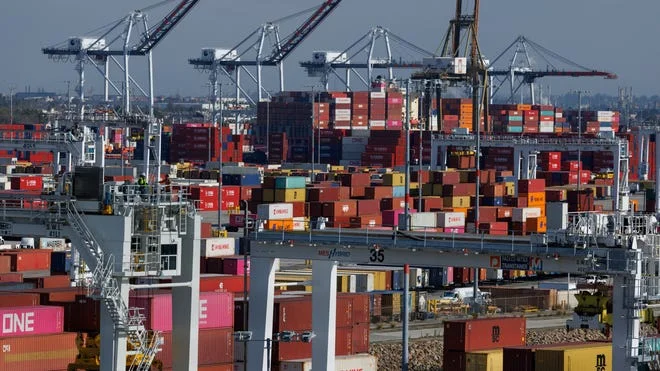
Gavin Newsom’s Bid To Shield California From Trump’s Tariffs Highlights State’s Limits In Global Trade War
The escalating U.S.-China trade war has thrown California—America’s top trade state—onto the frontlines, setting the stage for a bold, but likely futile, effort by Governor Gavin Newsom to shield the Golden State’s economy from the brunt of Washington’s heavy-handed tariffs. As President Donald Trump ramps up levies and global trading partners retaliate, Newsom’s pointed pleas for carve-outs on California-made goods underscore the state’s economic vulnerability and illuminate the razor-thin power a governor holds in the world of international trade.

On the heels of Trump’s decision to hike tariffs on Chinese goods to a staggering 145% and impose a 10% blanket levy on many allies, Newsom released a video urging foreign leaders to exempt California products from retaliatory measures. “Donald Trump’s tariffs do not represent all Americans,” Newsom declared, emphasizing a commitment to “stable trading relationships around the globe.” Behind the scenes, his administration scrambled to expand strategic partnerships in hopes of softening supply chain shocks and rising costs already rippling through California’s $4.1 trillion economy.
Yet, experts and economists are skeptical Newsom can affect much change. “Other countries do have a friend in California,” conceded Sean Randolph of the Bay Area Council Economic Institute. But, as Maurice Obstfeld of the Peterson Institute for International Economics bluntly put it, “No country makes trade agreements with subnational regions. The U.S. federal government has not made California a free-trade enclave.”
This legal reality—trade pacts and tariffs fall squarely under federal jurisdiction—leaves Newsom’s aspirations highly constrained. Kenneth Rogoff of Harvard summed it up: “It is not obvious what he can offer sovereign countries in return”—and states are constitutionally barred from signing international trade deals.
California’s reliance on global commerce makes it uniquely exposed. Last year, the state exported $183 billion in goods and imported over $491 billion—much of it with China, Mexico, and Canada. Its biggest exports to China—computers, electronics, machinery, agriculture products, and processed foods—are now in Beijing’s crosshairs as China retaliates with an 84% tariff on American goods. The agricultural sector faces added pain, affecting almonds, pistachios, dairy, and wine—signature California products long dominating export charts.

Even as Newsom forges new connections, officials acknowledge the limits. “The administration is actively engaging with our international partners and exploring opportunities to strengthen our shared economic interests,” said spokesperson Tara Gallegos, but specific progress remains unclear. Meanwhile, major California industries like tech and entertainment are perceived as prize targets for foreign retaliation, and the state’s top status as a U.S. travel destination is at risk as foreign tourism bookings already plunge.
For many observers, Newsom’s resistance is as much about political positioning as economic strategy. As the prospect of higher prices looms for consumers and manufacturers alike—from iPhones to avocados—Democratic leaders, eyeing national influence ahead of the 2028 presidential race, are eager to cast themselves as defenders against erratic White House policy.
Still, as the Bay Area Council’s Randolph notes, “We’re all going to live with higher prices,” and for Californians, governor-led refuge from the turbulence of global trade remains a distant hope. Yet the crisis opens debate: Should states’ economic engines have more say in federal trade policy? And what else can California do to protect itself?
How do you think California should respond to the intensifying trade war? Share your thoughts in the comments below.